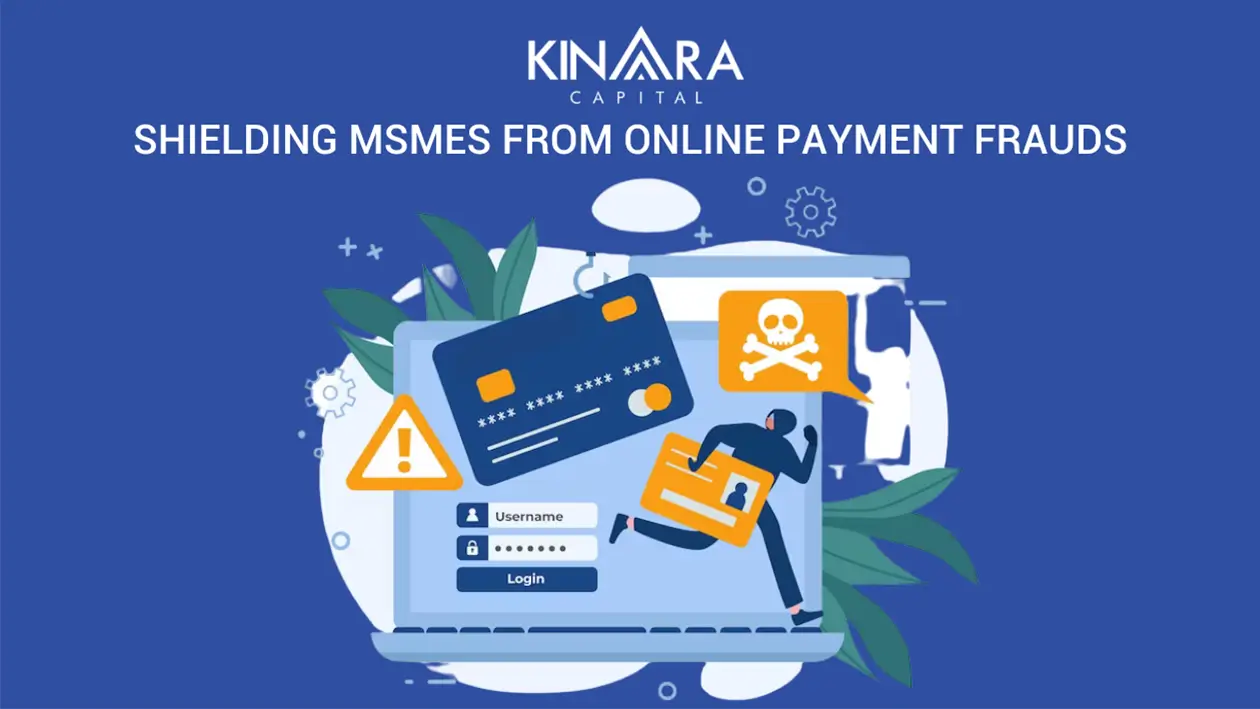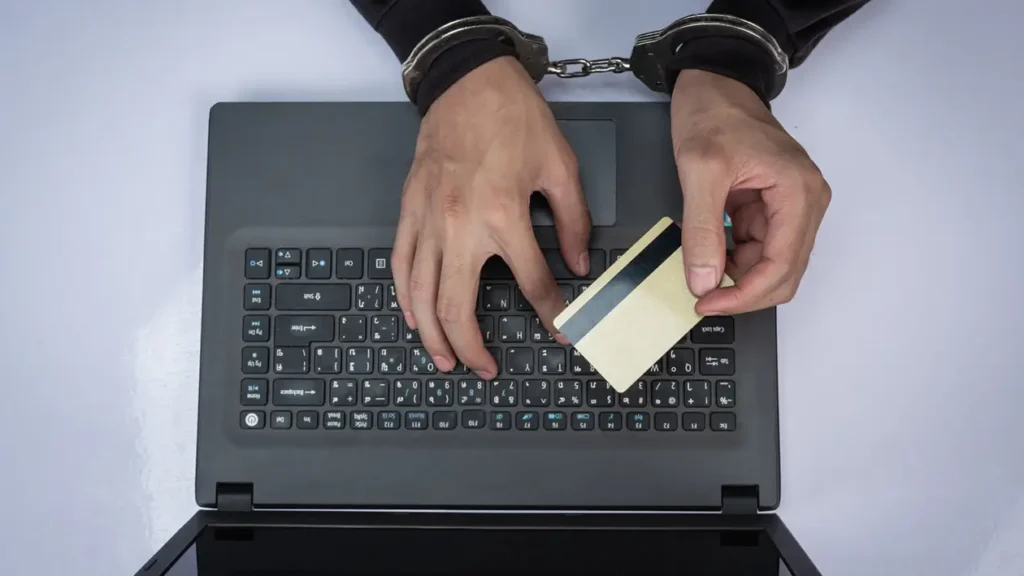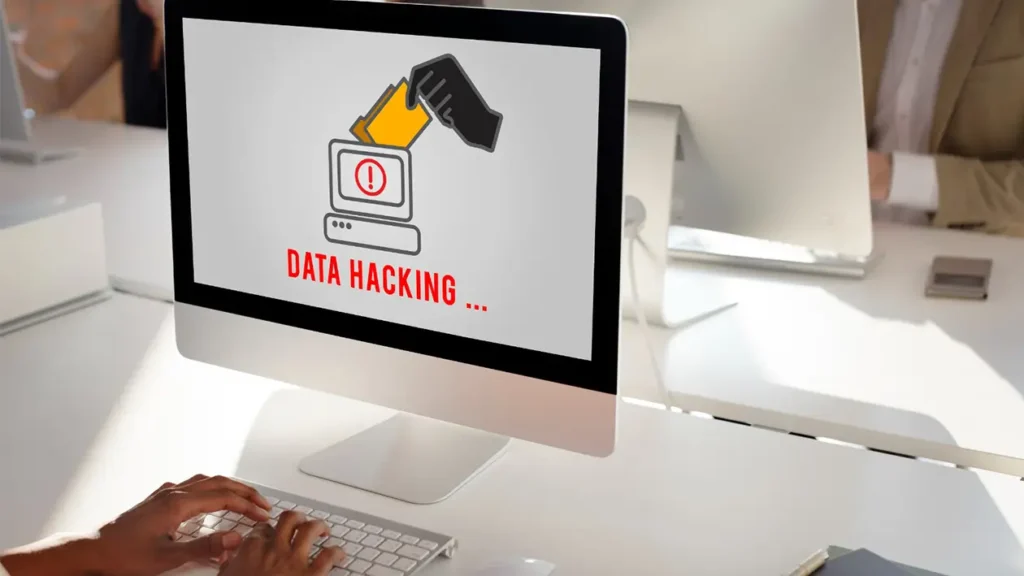
In the increasingly digital world, online payment frauds have emerged as a significant threat to individuals, businesses, and financial institutions alike. The advancement of technology and the widespread use of online transactions have provided fraudsters with new avenues to exploit vulnerabilities and deceive unsuspecting victims. From phishing scams to identity theft and card skimming, online payment frauds have become more sophisticated, posing a significant challenge to combat. Let’s shed light on the various types of payment fraud, their impact on different stakeholders, and the preventive measures one can take to safeguard against them.
The rapid growth of digital transactions in India brings with it an increased risk of online payment fraud. However, the lack of education and awareness about online payment security among users can make them vulnerable to various fraudulent activities.
The surge in digital transactions has led to a rise in online payment fraud. Recent data from the Reserve Bank of India (RBI) reveals a substantial increase in both the volume (216%) and value (10%) of digital payments when comparing March 2022 to March 2019. Notably, Unified Payments Interface (UPI), Immediate Payment Service (IMPS) and Prepaid Payment Instruments (PPIs) transactions within the digital payment ecosystem have demonstrated Compound Annual Growth Rates (CAGRs) of 104%, 39%, and 13% respectively during this period. While these figures highlight the growing acceptance of digital transactions among Indians, it is crucial to acknowledge the security challenges arising from insufficient education and understanding of online payment processes.
As digital transactions become more prevalent, cybercriminals are adapting their tactics to exploit vulnerabilities in online payment systems. Lack of awareness and understanding among users can make them easy targets for fraudsters, who employ techniques such as phishing, identity theft, malware attacks, and fake apps or websites to deceive unsuspecting individuals. Educating users about online payment security is crucial to combat fraud.
Online payment frauds encompass a range of deceptive practices and illicit activities that occur in the digital realm. These frauds exploit vulnerabilities in online payment systems, manipulate unsuspecting users, and result in financial losses.

As e-commerce continues to thrive, online payment fraud has become a pressing concern. Fraudsters use stolen credit card information or hijacked accounts to make unauthorized purchases, often bypassing security measures through proxy servers or anonymizing services. To enhance security, online merchants should implement multi-factor authentication, address verification systems, and fraud detection tools to identify suspicious transactions and protect their customers. Let’s explore the types of online payment fraud in more detail:
Phishing attacks involve fraudulent emails, text messages, or phone calls disguised as legitimate institutions, aiming to deceive individuals into sharing sensitive information like passwords, credit card details, or banking credentials. By preying on human psychology and exploiting trust, fraudsters manipulate victims into unwittingly divulging their personal information. To combat payment frauds, individuals should exercise caution, verify the authenticity of requests, and avoid clicking on suspicious links or attachments.
Card skimming payment fraud occurs when fraudsters use devices to capture credit or debit card information during legitimate transactions, such as at ATMs or point-of-sale terminals. These devices can be installed discreetly and are designed to collect card details, enabling criminals to clone cards or make unauthorized transactions. Vigilance is crucial, and individuals should inspect card readers for any signs of tampering, cover their PINs when entering them, and regularly monitor their account statements for any suspicious activity.
Identity theft involves the unauthorized use of someone’s personal information to commit fraudulent activities. Fraudsters may gather sensitive data through various means, such as hacking databases, stealing mail, or exploiting weak security measures. Once in possession of this information, they can open new accounts, apply for loans, or make purchases in the victim’s name. To mitigate the risk of identity theft payment fraud, individuals should safeguard personal information, use strong and unique passwords, and regularly monitor their credit reports for any unusual activity.
Business Email Compromise (BEC) involves fraudsters impersonating high-level executives or vendors to manipulate employees into making fraudulent wire transfers or disclosing sensitive company information. These sophisticated payment frauds rely on social engineering tactics, extensive research, and compromised email accounts. Organizations must educate employees about BEC scams, implement strict payment approval processes, and utilize email authentication protocols like DKIM and DMARC to prevent unauthorized access.
Man-in-the-Middle (MITM) attacks occur when a fraudster intercepts communications between the victim and the legitimate payment service provider. By eavesdropping on the transaction, the attacker can obtain sensitive information, such as credit card details or login credentials, and use it for fraudulent purposes. To protect against MITM attacks, individuals should use secure and encrypted connections (HTTPS), avoid using public Wi-Fi networks for sensitive transactions, and regularly update their devices and software to patch security vulnerabilities.
Fraudsters often set up fake online stores to deceive consumers into making purchases for products or services that do not exist. These fraudulent websites may appear professional and legitimate, featuring enticing offers or discounts. Victims unknowingly provide their payment information, only to receive subpar or counterfeit goods or nothing at all. To avoid falling victim to fake online stores, individuals should research the website’s credibility, read reviews, and use secure payment methods or reputable platforms for online purchases.
In India, UPI is without a doubt the most popular method for making payments on a daily basis. Although many people are still unfamiliar with the idea, UPI payment fraud is beginning to surge on select online marketplaces that let users sell pre-owned items.
It is disheartening to observe the increasing prevalence of UPI payment frauds and the detrimental impact they have on unsuspecting individuals. Moreover, there are various other UPI fraud techniques that are spreading like wildfire, preying on the trust and naivety of users. Impersonation is a particularly insidious tactic employed by fraudsters, as they skillfully pose as legitimate businesses or notable merchants. By adopting the identities of trusted entities, they exploit the trust placed in these established brands and deceive unsuspecting customers into making payments in advance for goods or services that will never be delivered. The scammers go to great lengths to create a sense of urgency or offer enticing deals, leaving victims in a vulnerable position.
Phishing attacks remain a grave concern within the realm of UPI fraud. Fraudsters employ various means, such as email, SMS, or phone calls, to trick individuals into disclosing sensitive information like UPI credentials, One-Time Passwords (OTPs), or personal details. These deceptive communications often appear genuine, mimicking official correspondence from banks or payment service providers. Users caught off guard, may unwittingly share their confidential information, which the fraudsters then exploit to gain unauthorized access to their UPI accounts and carry out fraudulent transactions.
Furthermore, fraudsters exploit the trust associated with official UPI handles. They create counterfeit UPI handles that closely resemble those of reputable organizations or renowned merchants. Unsuspecting customers, assuming they are interacting with authorized entities, are lured into making payments or sharing personal information. This tactic capitalizes on the lack of awareness about UPI handle verification and the perception that any UPI handle must be legitimate. Unfortunately, this misconception is ruthlessly exploited by scammers, leading to financial losses and compromised personal information.

Instances of remote takeovers targeting vulnerable individuals, such as the elderly or those new to online banking, have unfortunately become all too common. In these payment frauds, scammers often masquerade as bank employees, exploiting the trust placed in financial institutions to gain access to personal devices. They claim to be assisting with a specific service or resolving an error on the victim’s phone, using fear tactics by emphasizing the potential consequences and threats to their bank accounts if the issue is not resolved immediately.
Under the guise of offering assistance, fraudsters guide victims through a series of instructions that ultimately lead to the installation of a remote access or screen-sharing app on their devices. Once the victims grant access, the scammers proceed to exploit this newfound control, harvesting sensitive information such as OTPs, saved passwords, banking credentials, and more.
Recognizing the severity of this issue, the RBI has issued guidelines to safeguard users from falling victim to such remote takeover scams. The RBI advises individuals to exercise caution when encountering technical glitches on their devices and needing to download any screen-sharing app. Specifically, users are urged to deactivate or log out of all payment-related apps before downloading such apps.
Moreover, it is crucial to download screen-sharing apps solely when advised to do so through the official toll-free number of the company, as listed on their official website. It is essential not to download such apps if an executive of the company contacts you through their personal contact number, as this is a red flag for potential fraud. Once the required task is completed, it is imperative to ensure that the screen-sharing app is promptly removed from the device to prevent any unauthorized access in the future.
The QR Code scam has unfortunately found its way into India as the popularity of smartphones and online payments continues to grow. This fraudulent scheme involves individuals being targeted by con artists who employ various disguises to gain their trust. These scammers convince unsuspecting victims to use the banking applications on their smartphones to scan QR codes. However, what victims are unaware of is that by scanning the code, they inadvertently authorize a transfer of money into the scammer’s bank account.
The RBI has released a circular to inform customers about this QR Code scam since it recognises the seriousness of the situation. The RBI draws attention to the fact that scammers routinely approach clients and employ duplicitous methods to get them to scan QR codes using their banking applications. Unaware users that scan the code unintentionally authorise the transfer of money to the con artist’s bank account, which leads to monetary loss.
It is crucial for people to use caution and adhere to specific safety precautions in order to safeguard themselves from becoming a victim of the QR Code scam. Customers are urged by the RBI to scan QR codes carefully and to make sure they are coming from reliable sources. Before completing the transaction, it is essential to confirm the legitimacy of the person or organisation asking the code to be scanned. Additionally, users should refrain from scanning QR codes that they get from unfamiliar sources, particularly if they are being pressed or asked to do so urgently.
The Micro Small and Medium Enterprises (MSME) sector plays a vital role in India’s economy. It contributes significantly to the country’s GDP and employment generation. MSMEs contribute about one-third of India’s GDP. The sector’s significant contribution helps drive economic growth and development. With over 79 lakh registered MSMEs, this sector is responsible for employing about 12 crore people. MSMEs are known for their labour-intensive nature, making them significant job creators, especially in rural and semi-urban areas.
The MSME sector accounts for approximately 40% of India’s total exports. Many MSMEs engage in export-oriented activities, including manufacturing, handicrafts, textiles, and other sectors. They play a crucial role in promoting exports and contributing to India’s foreign exchange earnings. The MSME sector provides opportunities for inclusion and entrepreneurship, particularly for marginalized groups and traditionally underrepresented entrepreneurs.
This includes women entrepreneurs, rural entrepreneurs, and those from economically weaker sections of society. MSMEs empower these individuals by offering them a platform to participate in economic activities and contribute to the nation’s growth.
While the MSME sector offers immense potential, it also faces challenges related to digital fraud and compliance requirements mandated by RBI. Many MSMEs, particularly those led by marginal entrepreneurs, may lack adequate knowledge and resources to address these challenges. Therefore, there is a need to support MSMEs in enhancing their digital literacy and understanding of regulatory compliances.
According to a Financial Express story, the RBI assessed that there were 128 crore rupees worth of online fraud cases in FY22. MSMEs become increasingly frequently the target of cyberattacks as a result of a lack of funding for all-encompassing cybersecurity solutions. Small firms are the target of more than 40% of cyberattacks, which result in an average global loss of more than $188,000 for each attack, according to a new survey. In India, 62% of small firms said they had experienced a cyberattack of some kind the previous year. Losses of more than Rs 3.5 crore have been caused by these. Here are some possible reasons:
Many MSMEs may not have dedicated cybersecurity teams or the financial resources to implement robust security measures. This makes them more vulnerable to online payment frauds, as they may lack the expertise and tools to identify and prevent fraudulent activities.
MSME owners and employees may not be fully aware of the various types of online payment fraud and the techniques used by fraudsters. This lack of awareness makes them more susceptible to falling victim to phishing emails, fake invoices, or other fraudulent schemes.
Due to budget constraints or limited technical knowledge, MSMEs may not have implemented sufficient security measures to protect themsleves from online payment frauds. This can include outdated software, weak passwords, or lack of encryption, all of which can be exploited by fraudsters.
Fraudsters often specifically target MSMEs because they perceive them as easier targets compared to larger organizations. They may exploit vulnerabilities in the MSME’s payment processes, such as weak authentication methods or insecure payment gateways.
MSMEs often rely on third-party service providers for their payment processing systems. If these providers have weak security measures or become victims of a data breach, the MSMEs using their services may be exposed to online payment fraud.
MSMEs may not have the resources to invest in real-time monitoring and detection systems that can identify suspicious payment activities. Without proper monitoring, fraudulent transactions can go unnoticed, leading to financial losses.

To mitigate the risks of online payment fraud, MSMEs should invest in secure payment systems, regularly update software and security protocols, provide training and awareness programs for their employees, use strong authentication methods, and regularly monitor their payment activities for any signs of fraud. It’s also advisable to consult with cybersecurity professionals or seek assistance from reputable payment service providers to enhance security measures.
Different types of online payment fraud have been covered this far. However, how can MSMEs create a successful risk management plan to safeguard their business from payment fraud? MSMEs can take several measures to protect themselves from online payment fraud:
Provide comprehensive training to employees about online payment fraud risks, common fraud techniques, and how to identify and respond to suspicious activities. Ensure that all employees are aware of security best practices, such as not sharing sensitive information or clicking on suspicious links.
Require strong authentication methods for online payment transactions, such as two-factor authentication (2FA) or multi-factor authentication (MFA). This adds an extra layer of security by combining something the user knows (password) with something they have (a unique code sent to their mobile device, for example).
Ensure that your payment systems, including payment gateways and online platforms, are secure and up to date. Regularly apply security patches and updates, use encryption technologies, and choose reputable payment service providers that have robust security measures in place.
Utilize secure and trusted networks for online payment transactions. Avoid using public or unsecured Wi-Fi networks, as they can be easily compromised. Encourage employees to use secure networks when accessing payment systems.
Invest in fraud detection and monitoring systems that can identify suspicious patterns or activities. Implement real-time monitoring to quickly detect and respond to potential fraudulent transactions.
Conduct regular reviews and reconciliations of payments made and received. Compare transaction records with invoices, purchase orders, and other relevant documents to ensure accuracy and detect any discrepancies or unauthorized transactions.
Before engaging in significant payment transactions, verify the authenticity of suppliers and customers. Use reliable sources to confirm their legitimacy and contact them directly if any suspicious or unusual requests arise.
Stay informed about the latest online payment fraud trends, techniques, and vulnerabilities. Subscribe to cybersecurity newsletters, follow industry blogs, and participate in relevant forums or conferences to stay updated and adapt your security measures accordingly.
Develop a response plan for handling online payment fraud incidents. This plan should include immediate actions to be taken, such as contacting the bank or payment processor, reporting the incident to relevant authorities, and notifying affected parties.
Regularly back up important business data, including payment records and customer information, to ensure that it can be restored in the event of a security breach or data loss.
Payment frauds pose a substantial threat to individuals, businesses, and financial institutions, causing significant financial losses and reputational damage. As technology continues to evolve, so do the methods employed by fraudsters. It is imperative for individuals and organizations to remain vigilant, stay informed about the latest fraud trends, and adopt robust security measures to protect themselves against online payment fraud. By fostering a culture of awareness and implementing preventive measures, MSMEs can collectively combat this growing menace and ensure a safer digital landscape for all.
By following guidelines and remaining vigilant, MSMEs can protect themselves from falling victim to remote takeover fraud. It is crucial to verify the authenticity of any requests for remote access, especially when it involves sensitive financial information. Note, financial institutions will never ask for personal details or request access to devices through unsolicited calls or messages. Taking these precautions will help safeguard against the exploitation of personal information and the subsequent financial losses associated with remote takeovers.
Overall, the MSME sector’s significant contribution to India’s economy, employment generation, export potential, and inclusive entrepreneurship makes it a crucial pillar of the country’s economic growth and development.
Collaboration between various stakeholders, including government bodies, financial institutions, payment service providers, and consumer advocacy groups, is crucial to address online payment fraud. Together, they can develop and implement initiatives to educate users, strengthen security measures, and establish effective mechanisms to report and resolve fraudulent incidents.
RBI and other regulatory bodies play a vital role in establishing guidelines and regulations to ensure the security and integrity of digital payment systems. Compliance with these regulations by financial institutions, payment processors, and merchants is essential to maintain the trust and confidence of users.
The landscape of online payment fraud constantly evolves, requiring ongoing efforts to enhance security measures, detect new fraud patterns, and develop innovative solutions. Collaboration, research, and investment in technology-driven fraud prevention systems can help stay one step ahead of fraudsters.
In conclusion, while the growth of digital transactions in India presents significant opportunities, it also brings the challenge of addressing online payment fraud. By promoting education, awareness, and collaboration among stakeholders, individuals and businesses can enhance their understanding of online payment security and take proactive measures to mitigate the risks associated with digital transactions. MSMEs should remember, it is essential to consult with cybersecurity professionals or seek guidance from trusted sources to implement effective security measures that are tailored to your specific business needs.
To perform various security compliances and apply safety measures, MSMEs require capital. To fund their needs Kinara Capital, an RBI registered Systemically Important NBFC in India provides collateral-free business loans. The NBFC aims to enhance the growth of the MSME sector and help them get quick access to credit. MSMEs can avail working capital loans by checking their loan eligibility in 1-minute in the myKinara application which is available to download from the Google Play Store or on the Kinara Capital website.
Also, we have a dedicated customer support team available between Monday – Friday (9.30 AM – 6.00 PM) at our toll free number 1800-103-2683 for any questions or assistance. This ensures that entrepreneurs can get the help they need throughout the loan process. The team will contact the business owner and resolve their queries. With Kinara, MSMEs can go from decision to disbursement in 24-hours.
